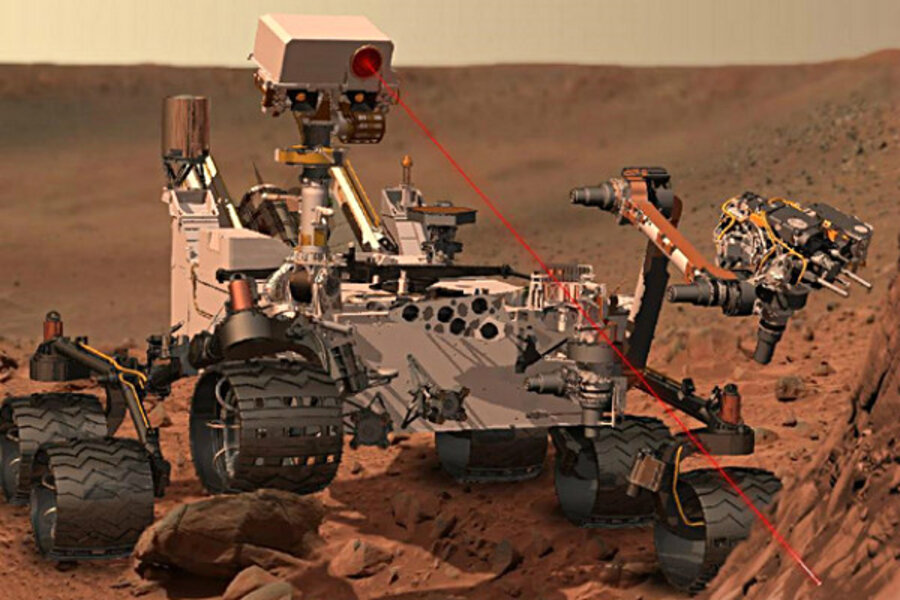Why does NASA's Mars rover have a laser beam attached to its head?
Loading...
When NASA’s newest rover arrives on Mars Sunday night (Aug. 5), it will be carrying a host of state-of-the-art instruments, including the head-mounted, rock-zapping laser called ChemCam.
The 1-ton Curiosity rover aims to determine if its landing site, the 96-mile-wide (154 kilometers) Gale Crater, can or ever could support microbial life. ChemCam will play a vital role in this quest by allowing the rolling robot to study the composition of rocks from afar.
Mounted to Curiosity’s "head" just above its camera "eyes," ChemCam combines a powerful laser with a telescope and spectrometer that can analyze the light emitted by zapped materials, thereby determining the chemistry of Mars rocks with unprecedented precision.
Using technology created at the U.S. Department of Energy's Los Alamos National Laboratory in New Mexico, ChemCam will focus a beam of infrared light onto a target from its French-built laser, vaporizing it with over a million watts of energy from up to 23 feet (7 meters) away. [Curiosity Armed with Laser, Cameras (Infographic)]
ChemCam’s telescope will observe the process, while its spectrometer — which is sensitive to light from every element on the periodic table — will analyze emissions from the resulting plasma, telling scientists what lies within.
"ChemCam is designed to look for lighter elements such as carbon, nitrogen and oxygen, all of which are crucial for life," said Los Alamos' Roger Wiens, ChemCam principal investigator. "The system can provide immediate, unambiguous detection of water from frost or other sources on the surface, as well as carbon — a basic building block of life as well as a possible byproduct of life. This makes the ChemCam a vital component of Curiosity’s mission."
Because ChemCam uses a laser, Curiosity can examine many targets quickly, without having to drive right up to them. Even sitting still, the rover will be able to take up to a dozen measurements a day, scientists have said. And the dustiest rocks shouldn't pose much of a problem for ChemCam, which can clear away loose surface material with a zap or two.
In addition to searching for the building blocks of life hidden inside rocks, ChemCam will serve as a scout for future explorers by helping identify the potential toxicity of Martian soil and dust.
If astronauts ever land on Mars, they're going to get dusty in the process — possibly even more so than they did on the moon. It’s important to know if Mars’ dust contains anything dangerous like lead or arsenic, researchers say.
ChemCam’s laser-induced breakdown spectroscopy (LIBS) technology has been used on Earth for environmental monitoring, seafloor studies and cancer detection. But Curiosity will be taking it to new heights by deploying the technology on the surface of another planet.
Visit SPACE.com for complete coverage of NASA's Mars rover landing Sunday. Follow SPACE.com on Twitter @Spacedotcom. We're also on Facebook and Google+.
- Mars Rover Curiosity: Mars Science Lab Coverage
- NASA's Huge Mars Rover Curiosity: 11 Amazing Facts
- Mars Rover Landing: NASA Set for Curiosity's Red Planet Arrival (Photos)
Copyright 2012 SPACE.com, a TechMediaNetwork company. All rights reserved. This material may not be published, broadcast, rewritten or redistributed.





